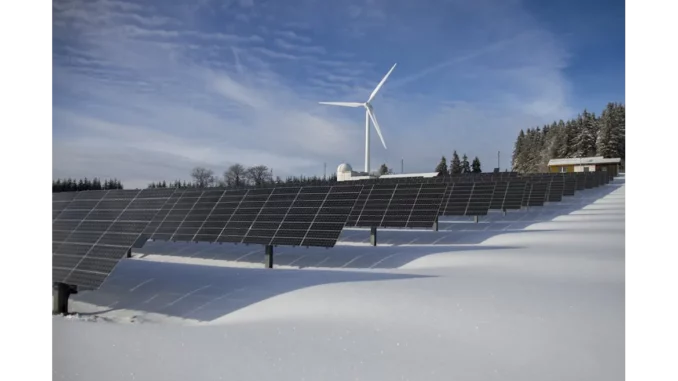
Summary
Innova Research Unveils Ground-breaking Hydrogen Production Technologies to Slash Carbon Emissions
In a recent interview in Vancouver, Emily Thompson, a senior analyst at Innova Research, discussed the findings of the new report “Innovative PGM Related Technologies in Electrocatalysis and Photocatalysis Towards Carbon Reduction 2024.” The report highlights revolutionary methods in hydrogen production that could significantly cut carbon emissions, with a focus on the role of Platinum Group Metals (PGMs) in these advancements. Thompson elaborated on the potential of innovative technologies, notably photocatalytic water splitting, to transform the sustainability landscape.
Main Article
Emerging Technologies in Focus
At the core of the report lies a meticulous examination of hydrogen production pathways, detailing the carbon footprint of each method. “Our goal was to offer a comprehensive overview that sheds light on both the environmental impacts of traditional hydrogen production and the promise of emerging technologies,” Thompson explained, her enthusiasm palpable.
The study used hydrogen (H2) production as a case study, quantifying carbon emissions per kilogram of hydrogen produced. Traditional thermal catalysis, electrocatalysis with and without PGMs, and the emergent photocatalytic water splitting technology were all scrutinised. “The findings are quite illuminating,” Thompson pointed out. “Electrocatalysis with PGMs, when powered by a renewable-dominant grid, results in carbon emissions as low as 2.81 kg CO2 per kg H2. In stark contrast, conventional steam methane reforming (SMR) emits approximately 10.5 kg CO2 per kg H2.”
Photocatalytic Water Splitting: A Game Changer
A significant highlight of the report is the potential of photocatalytic water splitting, a cutting-edge method likened to artificial photosynthesis. This technology employs a semiconductor-based photocatalyst, often enhanced with PGMs, to utilise sunlight in splitting water into hydrogen and oxygen. “The efficiency of this process is remarkable, with emissions as minimal as 0.105 kg CO2 per kg H2 when completely solar-driven,” Thompson stated.
Dr. Nancy Wu, Innova Research’s director, lauded this process for its potential in producing truly clean hydrogen. Echoing this sentiment, Thompson added, “The potential for photocatalytic technology to revolutionise hydrogen production is substantial. It harnesses natural resources in a way that mimics nature, yet with improved efficiency due to PGMs.”
The Role and Challenges of PGMs
The report underscores the pivotal role of PGMs in enhancing the efficiency of both electrocatalysis and photocatalysis. “PGMs possess unique properties that enable superior energy conversion and stability, crucial for these processes,” Thompson remarked. However, she also acknowledged the environmental concerns linked to PGM production. “There are upstream carbon emissions associated with PGM extraction and processing,” she conceded. “Nonetheless, our report incorporated these emissions into the overall assessment, ensuring a transparent evaluation of each pathway.”
Innova Research’s dedication to offering valuable market intelligence and technology scouting services is evident through their thorough analysis. As Thompson noted, “Our mission is to empower clients to make informed decisions. By leveraging primary research and in-depth analysis, we provide insights necessary to navigate the rapidly evolving technology landscape.”
The Impact and Future Discussions
As the interview concluded, Thompson expressed her hopes for the report’s impact. “I hope it ignites meaningful discussions about the future of hydrogen production and the role of emerging technologies in diminishing carbon emissions. Our findings highlight viable, more sustainable alternatives to traditional methods, and I believe that conversation is crucial.”
Detailed Analysis
The unveiling of Innova Research’s report comes at a pivotal time when industries and governments are under increasing pressure to reduce carbon footprints. The focus on hydrogen production is particularly timely given its potential as a clean energy source. The report’s findings suggest a transformative shift could be on the horizon, provided that the technological and environmental hurdles associated with PGMs can be addressed. The low emissions potential of photocatalytic water splitting, in particular, positions it as a frontrunner in the race towards sustainable hydrogen production.
The detailed analysis provided by Innova Research offers a roadmap for entities looking to invest in sustainable technologies. Their emphasis on PGMs in hydrogen production aligns with broader trends towards decarbonisation and renewable energy adoption. As the global community continues to prioritise carbon reduction, the insights from this report could inform both policy and investment decisions, steering industries towards more sustainable practices.
Further Development
As the dialogue around hydrogen production and carbon reduction evolves, further developments are expected. Innova Research has hinted at ongoing studies that will delve deeper into the lifecycle analysis of emerging technologies, offering more granular insights into their environmental impact. Additionally, as industries begin to adopt these innovations, real-world data will further refine understanding and implementation strategies.
Readers are encouraged to stay updated on subsequent reports and analyses from Innova Research, which promise to shed more light on the path towards sustainable hydrogen production. With the potential for collaboration between research institutions, industry leaders, and policymakers, the future of clean hydrogen technology holds significant promise. Stay tuned for further coverage on how these developments unfold and their implications for the global energy landscape.

